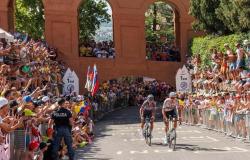Eighty years and an indelible mark in history: D-Day, “the longest day”, or simply “the day”, marks the turning point of the Second World War, with the entry of the Allied forces into Europe and the beginning of the end of the Nazi era. History is not made in a day, analysts teach, but certainly June 6, 1944 and the Normandy landing represent a milestone on which the balance of the Western world has been built up to the present day. Operation Neptune, part of the larger Overlord, represents perhaps the greatest military action of all time: the American, English and Canadian amphibious forces, with the logistical support of the French resistance, landed on the coast overlooking the English Channel, the western gateway to the imperialistic chessboard of Hitler’s Germany.
The landing from the ocean
Gigantic action that starts during the night: seven thousand ships pour onto the coasts of Normandy, disembarking around 150 thousand men from the early hours of dawn. Dramatic operation: the German defense batteries, although surprised by an action imagined further north, in the Calais area, engaged in very tough battles with the Allied soldiers exposed to the counterattack due to the large, unsheltered beaches on the Norman coast. The harshest clash takes place on Omaha Beach (the code name chosen by the Americans, also evoked by the film Saving Private Ryan), where the Nazis somehow manage to counter and slow down the offensive coming from the sea, while other allied incursions find weaker German lines. Ten thousand men fell in those ferocious battles in front of the sea, but the American and English forces managed to open a breach in the Nazi front, marking a point of no return in the outcome of the world conflict.
Summer of battles
The Battle of Normandy, however, was much longer and ran through the summer of 1944, ending only on 25 August, when the liberation forces conquered the entire north-western part of France and arrived in Paris. The bill for the Allied forces is very heavy: 220 thousand “losses” were recorded, including the many dead, wounded and prisoners. Among the most dramatic events of those days, the brutal clashes in Caen, the capital of Lower Normandy, stand out: witnesses tell of a city in flames for eleven days, hit by 250 thousand tons of explosives, 80 percent of the buildings were razed to the ground . Thousands of inhabitants die: a part of the population manages to escape thanks to the presence of many abbeys in the surrounding countryside. In those days of furious fighting the Nazis carried out yet another crazy massacre: on 10 June an armored division of the SS exterminated an entire town, Oradour sur Glane, in the new Aquitaine, south of Normandy: 642 civilians were massacred in a few hours , including over two hundred children. A massacre on several occasions, with machine gun fire and the launching of deadly bombs. Colossal tragedy that wipes out forever a village of which – still – only the rubble remains, an indelible memory of the Nazi madness.
The race to Paris
The Allied forces manage to gain the upper hand and march towards Paris, one of the objectives of Operation Overlord. After six days of fighting in the streets of the capital, thanks to the insurrection of the French resistance, on August 25 the Americans, English and Canadians took control of the city, forcing the Germans into a disorderly retreat. The conquest of Paris, which came a couple of months after the liberation of Rome (4 June), is a granite piece in the evolution of the war which in the following months will see the definitive German collapse.
© All rights reserved





